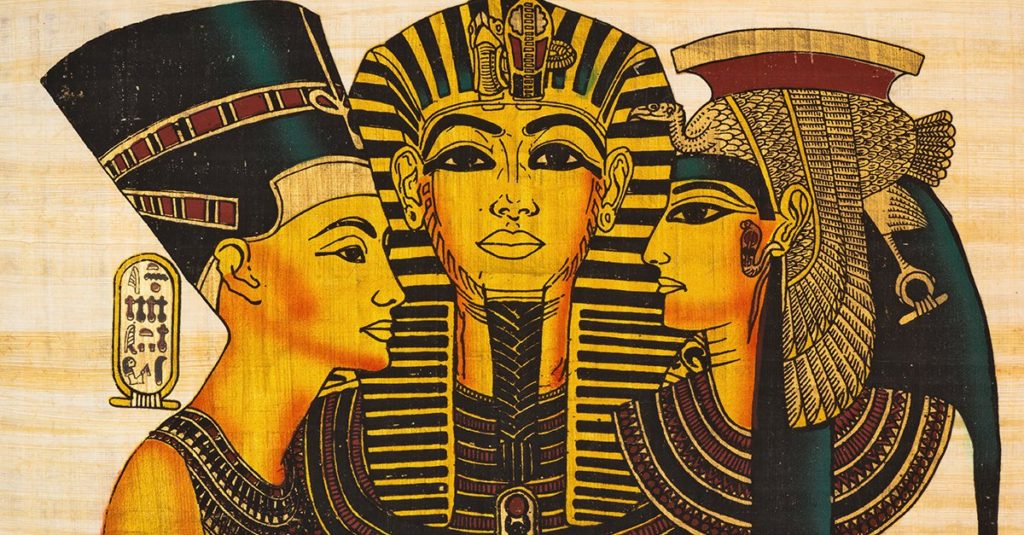All about ancient Egypt, including books, activities, lesson plans, some wonderful art, the great game of Senet, instructions for making a mummy, and a hieroglyphic typewriter.
Table of Contents
HISTORY
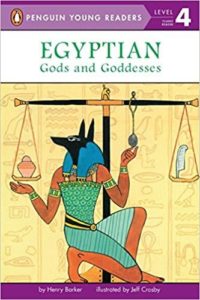
|
Henry Barker’s Egyptian Gods and Goddesses (Penguin Young Readers, 1999) – in beginning-reader big print with a simple text – covers a scattering of Egyptian gods and goddesses (Horus, Re, Thoth, Osiris, Isis, Anubis), Egyptian death customs, and the significance of mummies and pyramids. For age 5-7. |
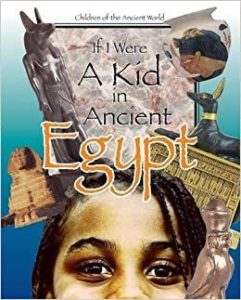
|
Cobblestone Publishing’s If I Were a Kid in Ancient Egypt (Cricket Books, 2007) directly addresses the reader: “Your house is probably made of mud bricks…You probably believe in many gods…” Illustrations are colorful drawings and photographs; additional information is provided in detailed fact boxes. For ages 6-11. |
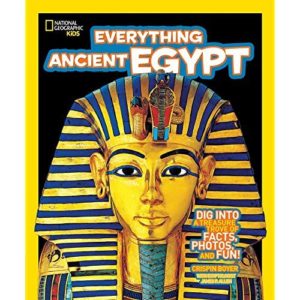
|
By Crispin Boyer, the National Geographic Kids Everything Ancient Egypt (National Geographic Children’s Books, 2012), gorgeously illustrated with color photographs, covers the Nile River and the land of Egypt, pharaohs, pyramids and the afterlife, Egyptian mythology, and daily life in ancient Egypt. Included is a “Fun with Ancient Egypt” section with hands-on activities. For ages 8-12. |
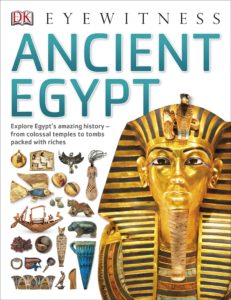
|
George Hart’s Ancient Egypt (Dorling Kindersley, 2008) in the Eyewitness Series is informational, interesting, and pure eye candy, crammed with terrific drawings and color photographs of artifacts and monuments. Most of the info is conveyed in picture captions. In the same series, also see James Putnam’s Pyramid and Mummy. For ages 8 and up. |
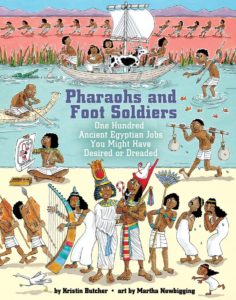
|
Kristin Butcher’s Pharaohs and Foot Soldiers (Annick Press, 2009) – illustrated with bright, clever, little cartoon figures – covers “One Hundred Ancient Egyptian Jobs You Might Have Desired or Dreaded.” Each chapter covers a different class of jobs (Army Jobs, Monumental Jobs, Temple Jobs, Artisan Jobs) – that is, everything from fan bearer and pharaoh to farmer, chariot maker, manicurist, and magician. For ages 8-12. |
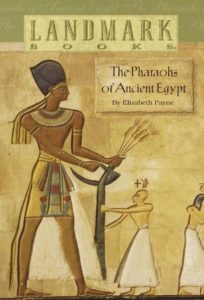
|
Elizabeth Payne’s The Pharaohs of Ancient Egypt (Random House Books for Young Readers, 1981) is excellent – informative history presented in the form of compelling stories. The book begins with the discovery of the Rosetta Stone by Napoleon’s soldiers; then moves back in time to the first Egyptians, the stories of Cheops and the building of the Great Pyramid, the female pharaoh Hatshepsut, the warrior pharaoh Thutmose III, the criminal pharaoh Akhetaton (husband of Nefertiti), and more. Highly recommended. For ages 9-12. |
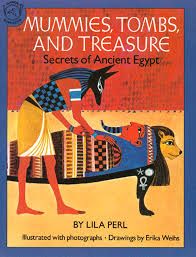
|
Lila Perl’s 100+-page Mummies, Tombs, and Treasure (Clarion Books, 1987) – illustrated with maps, drawings, and great black-and-white photographs – is a detailed and well-done overview of Egyptian religious beliefs and death rituals. Chapter titles include “Why the Egyptians Made Mummies,” “How a Mummy Was Made,” and “The Mummy’s Treasure and the Tomb Robbers.” For ages 9 and up. |
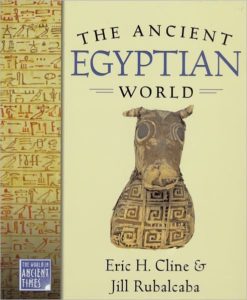
|
Eric H. Cline’s The Ancient Egyptian World (Oxford University Press, 2005) in the World in Ancient Times series is a superbly researched and designed introduction to ancient Egypt, covering prehistory to the Greco-Roman period. Chapter titles include “Stairway to Heaven: The Old Kingdom,” “Thank You, Rosetta Stone: Hieroglyphs,” and “Home Builders: The Pyramid Age.” For ages 11 and up. |
EGYPTOLOGY
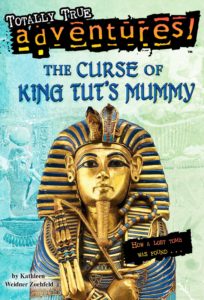
|
By Kathleen Weidner Zoehfeld, The Curse of King Tut’s Mummy (Random House Books for Young Readers, 2007) is the story of Howard Carter and the discovery of King Tutankhamen’s tomb in the form of a simple chapter book for readers ages 6-8. |
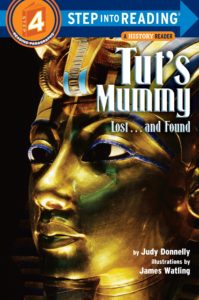
|
Judy Donolly’s Tut’s Mummy: Lost…and Found (Random House Books for Young Readers, 1998), a Step Into Reading book, is a simple account of Howard Carter’s discovery of the spectacular tomb of the pharaoh Tutankhamen, illustrated with photographs. For ages 6-8. |
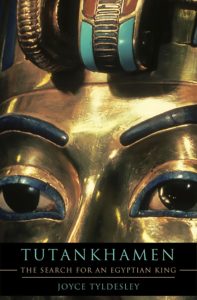
|
Joyce Tyldesley’s Tutankhamen: The Search for an Egyptian King (Basic Books, 2012) is an engaging and in-depth account of Tutankhamen’s life, death, and tomb discovery for teenagers and adults. |
| See The Discovery of King Tut’s Tomb. | |
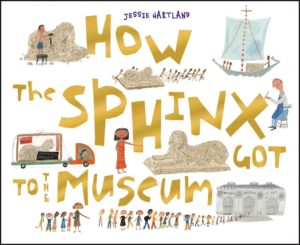
|
Jessie Hartland’s How the Sphinx Got to the Museum (Blue Apple Books, 2010) begins with the building of the female pharaoh Hatshepsut’s Sphinx, then leaps ahead 3000 years to its discovery by archaeologists, and then to its (effortful) transport and installation at the Metropolitan Museum of Art. Starred reviews. For ages 6-9. |
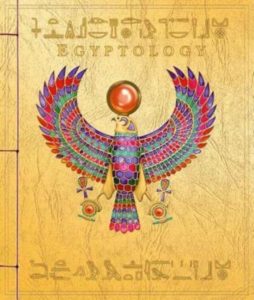
|
By Emily Sands (and Dugald Steer), Egyptology (Candlewick, 2004) purports to be the journal of Miss Emily Sands, who set off up on an expedition up the Nile in 1926 in search of the tomb of Osiris, and then vanished forever. Her journal, however, survived, crammed with observations, sketches, photos, fold-out maps, postcards, and informational booklets. A gorgeous book with a gilded and jeweled cover for ages 8 and up. |
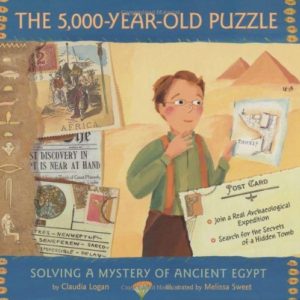 |
In Claudia Logan’s The 5000-Year-Old Puzzle (Farrar, Straus & Giroux, 2002) – with great illustrations by Melissa Sweet – the year is 1924 and young Will Hunt and his family have joined an expedition headed by prominent Egyptologist George Reisner. The cleverly designed story is told through panel cartoons, postcards, diary entries, and the minutes of the King Tut Club. For ages 8-11. |
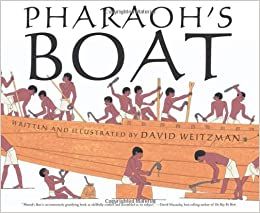 |
By David Weitzman, Pharaoh’s Boat (Houghton Mifflin Harcourt, 2009) is the story of the building of the Pharaoh Cheops’s boat – with beautiful illustrations, reminiscent of David Macaulay, but in color. The story of the ancient shipwrights is paired with that of the modern archaeologist who unearthed and restored the boat 4000 years later. For ages 9 and up. |
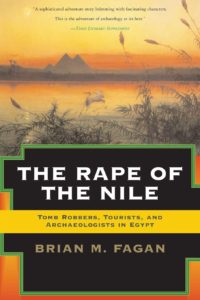 |
Brian Fagan’s The Rape of the Nile (Basic Books, 2004) tells the tale of “Tomb Robbers, Tourists and Archaeologists in Egypt,” from the ancient historian Herodotus and the early Theban tomb robbers through mummy traders, the flamboyant Giovanni Belzoni (circus strongman and amateur Egyptologist), and recent discoveries, such as the tomb of the sons of Ramses and the sunken city of Alexandria. For teenagers and adults. |
| The Egyptologists is a large collection of brief biographies of Eyptologists, with links to expanded information on the more prominent, such as Howard Carter, Flinders Petrie, and Giovanni Belzoni. | |
| Want to become an Egyptologist? Find out how at Egyptologist: The Real Poop. |
